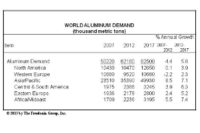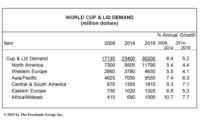World demand for bioplastics to exceed one million metric tons

Biodegradable plastics accounted for 90% of the world bioplastics market in 2010. Excellent growth is forecast for the two leading biodegradable plastics, starch-based resins and polylactic acid (PLA), both of which will more than double in demand through 2015. The fastest gains for biodegradable plastics, however, will be seen for polyhydroxy-alkanoate (PHA) resins, which are just entering the commercial market.
Despite the strong advances for biodegradables, non-biodegradable bio-based resins will be the primary driver of bioplastics demand through 2015 and beyond. Gains will be fueled by the availability of commercial quantities of bio-based polyethylene from Braskem’s 200,000-metric-ton-per-year plant in Brazil, which opened in late 2010. Two other bio-based polyethylene plants -- as well as a bio-based polypropylene facility -- are also in the planning stages and are expected to open around 2015. Additionally, industrial production of fully bio-based polyethylene terephthalate (PET) is forecast to become a reality by the end of the decade. As a result, demand for non-biodegradable bioplastics will rise from 30,000 metric tons in 2010 to 1.3 million metric tons in 2020.
Looking for a reprint of this article?
From high-res PDFs to custom plaques, order your copy today!






